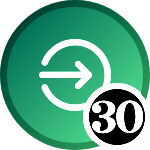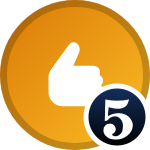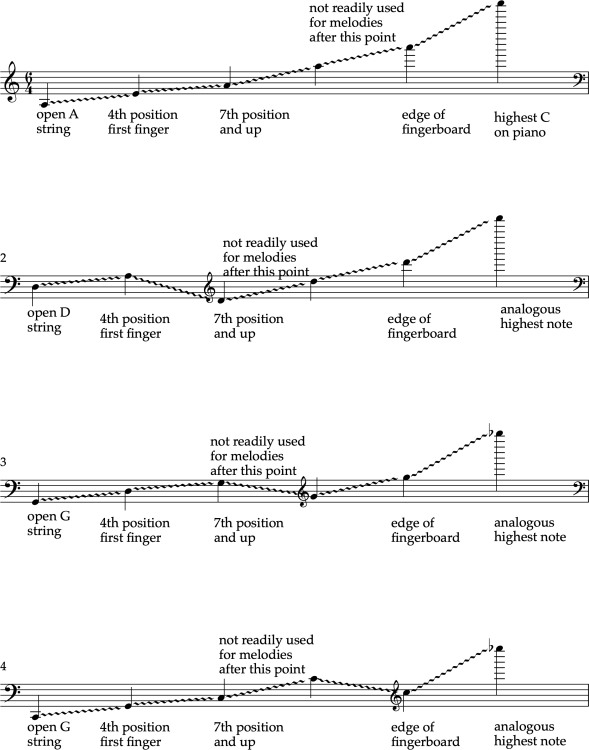
Chemathmusician0510
Members-
Posts
54 -
Joined
-
Last visited
About Chemathmusician0510

Profile Information
-
Gender
Male
Recent Profile Visitors
874 profile views
Chemathmusician0510's Achievements
-
Chemathmusician0510 started following Quick little harmony/counter-point mini-challenge :) , Share your favorite Mashups! , Writing for Cello and 5 others
-
Share your favorite Mashups!
Chemathmusician0510 replied to .Em.'s topic in Music Appreciation: Suggest Works or Articles
- 13 replies
-
- youtube videos
- favorite
-
(and 1 more)
Tagged with:
-
also playing technically a sonata no.4 aka the cello sonata as the piano part is harder than the cello part
-
fell free to ask any questions!
- 2 replies
-
- performance
- cello
-
(and 1 more)
Tagged with:
-
Double stops These usually cannot be used in quick succession, but if one note stays as a pedal tone, it is usable, either from a 3rd to a 5th or a 5th to a 7th within one position. Although sudden bursts are easier. See Prokofiev Symphony-Concerto 2nd mvmt cadenza for examples (yes, I know it is one of the hardest pieces ever written for cello) Harmonics on cello have the exact range as flute. note that only the distance between the two fingers matter: the range is the same for both touch-4 and touch-5. lowest notes per string C string: B3 G string: F#4 D string: C#5 A string: G#5
- 2 replies
-
- 1
-

-
- performance
- cello
-
(and 1 more)
Tagged with:
-
Very few composers really knew how to write for cello. Only a handful of famous composers even composed famous cello pieces. This will be an effort to bring more information to composers and hopefully have more memorable repertoire. Consider the cello as four instruments, the A string is somewhat harsh in the low positions but in the high positions, it soars like a soprano. It's somewhat oboe-like The D string is where most music intended to be played on the A string really is played as the notes are less harsh. The G string is the warmest and most soulful part of the cello, especially in a higher position. The C string is dark in the lower positions and almost comical up in the high positions, although it is scarcely heard. This string is quite like a bassoon along with the G string. This effectively makes the cello the most resonant in G keys. Double stops with open strings are most abundant in keys around G. for example, D is the only key where closed position triple-stops can be used somewhat freely (only major and minor chords are shown)
- 2 replies
-
- 2
-

-
- performance
- cello
-
(and 1 more)
Tagged with:
-
I just argued with my dad (a very good film composer) over bass clef old notation. He said that he learned it that way and the players who recorded had no problems. Is it because Chinese composers learned from the "russian school" and have little to no contact with the rest of europe or did I missunderstand something. All the online sources say old horn notation is obsolete. Can somebody explain it to me?
-
The one month may be a bit biased as my brother (11) already played Sibelius and Tchaikovsky violin concertos (albeit not perfect), Carmen Fantasy, Erlkonig, and God Save the King Paganini variations among some other pieces. But the cellist I wrote for got scared with double and triple stops (to be fair some of them were a little overboard and that was before learning enough harmony to do so)
-
probably a bit hard to sightread, (internal complaints start after 4 accidentals keys for most players), but I don't think its too bad to be performed with a month of rehearsal. Good players might only need a week. The counterpoint sections will probably be the hardest to rehearse. Although probably be a bit awkward like most barque pieces. (not to judge, but most barque pieces don't fit the modern instrument as well as pieces from latter periods). Also probably not qualified to judge on the counterpoint
-
I was originally going for a piano quartet (no viola) since I was thinking of having some people perform it, but then one of the violinists stepped up to play viola. Thats why the viola part follows the piano. An extra question: what do you thing about having the cello part plucked for the outer sections
-
Waltz 062725 2 - Full Score.pdf Waltz Qrartet Demo 063025.mp3 This is one I've been working on for a while. I was trying for section something like Tchaikovsky's Valse-Scherzo but lighter for the first section. The mp3 is only string quartet for now. Might have a recording latter, but in the meanwhile. Enjoy!
-
What did I get myself into? This descending circle of fifth of dominant chords with extensions has the 3 dim minor 7ths (6 tritones) going downwards and 4 aug chords going up. Result of me trying to voice lead increasingly complex dominant chords.
-
What Is Your Current Musical Project?
Chemathmusician0510 replied to AngelCityOutlaw's topic in Composers' Headquarters
been working on a Choral-Orchestral Theme and variations on a two motives D-F-E-C and G-A-F-E Way to much stuff that I want to compose in the future though -
Quick little harmony/counter-point mini-challenge :)
Chemathmusician0510 replied to UncleRed99's topic in Challenges


.thumb.png.8b5b433a341551e913a34392660bc95b.png)







